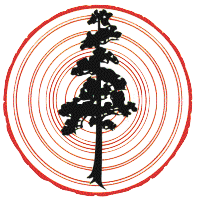How to Improve Dendrogeomorphic Sampling: Variogram Analyses of Wood Density Using X-Ray Computed Tomography
Knowledge of the spatial heterogeneity of wood is useful for industrial applications and improving dendrogeomorphic sampling, because it allows a better understanding of 3-D wood density structure in tree stems damaged by geomorphic processes. X-ray computed tomography (XRCT) scanning as a means of non-destructive measurement has become an important technique in tree research as it allows the detection of internal variations in wood density. In this paper a new methodology for modelling spatial variations of relative wood density using variograms on XRCT images is developed. For each tree, XRCT images perpendicular to the stem axis were obtained with 1-mm spacing. In a first step, ImageJ software was used to process each image. Then, more than 30 one-dimensional variograms were studied for a selected number of cross-sections. The results show that there is a pattern in the diffusion of relative wood density linked to the attenuation of the geomorphic damage along the stem from the wounded area. Although the number of samples could be increased, these preliminary results demonstrate that variograms of XRCT are a useful tool to optimize dendrogeomorphic sampling, saving time and costs.ABSTRACT

XRCT image reflecting different wood structures related with mechanical wounding (bz: barrier zone, d: decay, cp: callus pad, rw: reaction wood, EW: earlywood, LW: latewood, p: pith). For more details on the physiology of wounds refer to Shigo (1984) and Arbellay et al. (2012).

Directional variograms for two F. angustifolia cross-sections. Lag units are in pixels. (a) Undamaged cross-section. (b) Damaged cross-section.

(a) Cross-section for one F. angustifolia; (b) 1-D data sampled in different directions; (c) Variograms computed in the directions shown in (b).

A. glutinosa cross-section images selected from (a) undamaged and (b) highly damaged sections. (c) Example of the maximum sill value at small distances.

Radial plot of maximum sills at small variogram distances for the two cross-sections shown in Figure 4. The grey area represents the internal scar dimension in angles. The red line is the maximum sills for the undamaged cross-section. The green line corresponds to the maximum sills measured in the damaged cross-section.
Contributor Notes
